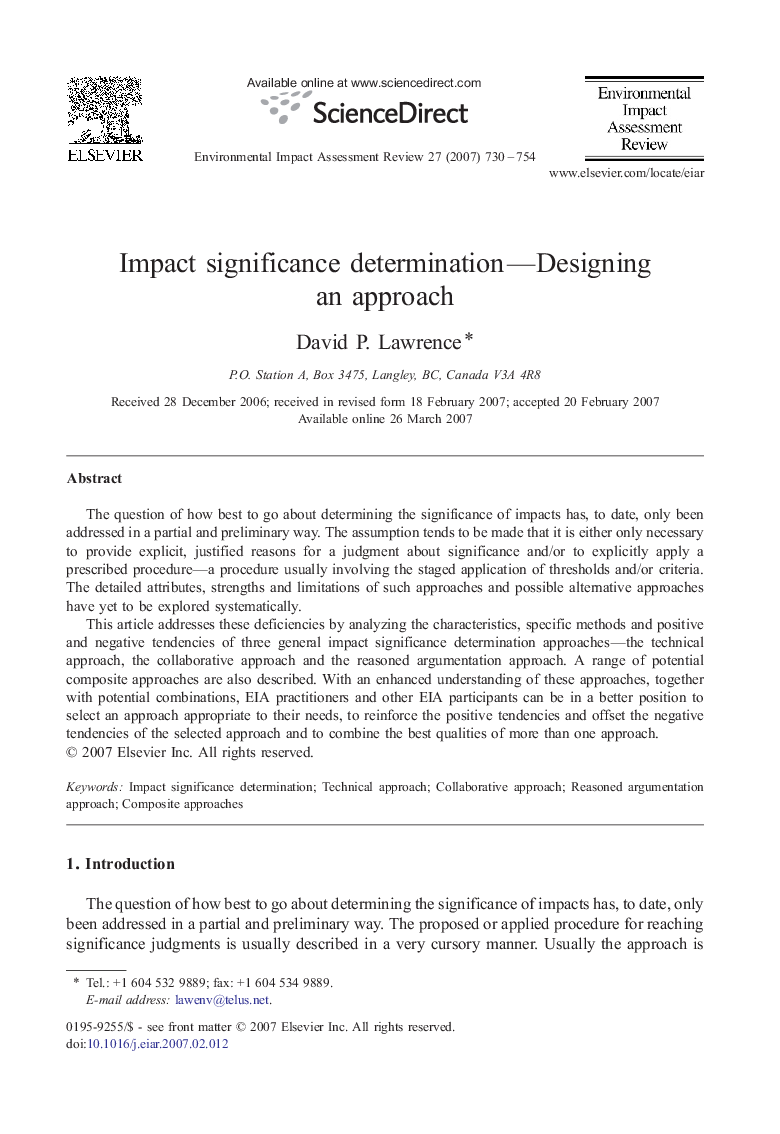| Article ID | Journal | Published Year | Pages | File Type |
|---|---|---|---|---|
| 1053349 | Environmental Impact Assessment Review | 2007 | 25 Pages |
The question of how best to go about determining the significance of impacts has, to date, only been addressed in a partial and preliminary way. The assumption tends to be made that it is either only necessary to provide explicit, justified reasons for a judgment about significance and/or to explicitly apply a prescribed procedure—a procedure usually involving the staged application of thresholds and/or criteria. The detailed attributes, strengths and limitations of such approaches and possible alternative approaches have yet to be explored systematically.This article addresses these deficiencies by analyzing the characteristics, specific methods and positive and negative tendencies of three general impact significance determination approaches—the technical approach, the collaborative approach and the reasoned argumentation approach. A range of potential composite approaches are also described. With an enhanced understanding of these approaches, together with potential combinations, EIA practitioners and other EIA participants can be in a better position to select an approach appropriate to their needs, to reinforce the positive tendencies and offset the negative tendencies of the selected approach and to combine the best qualities of more than one approach.
